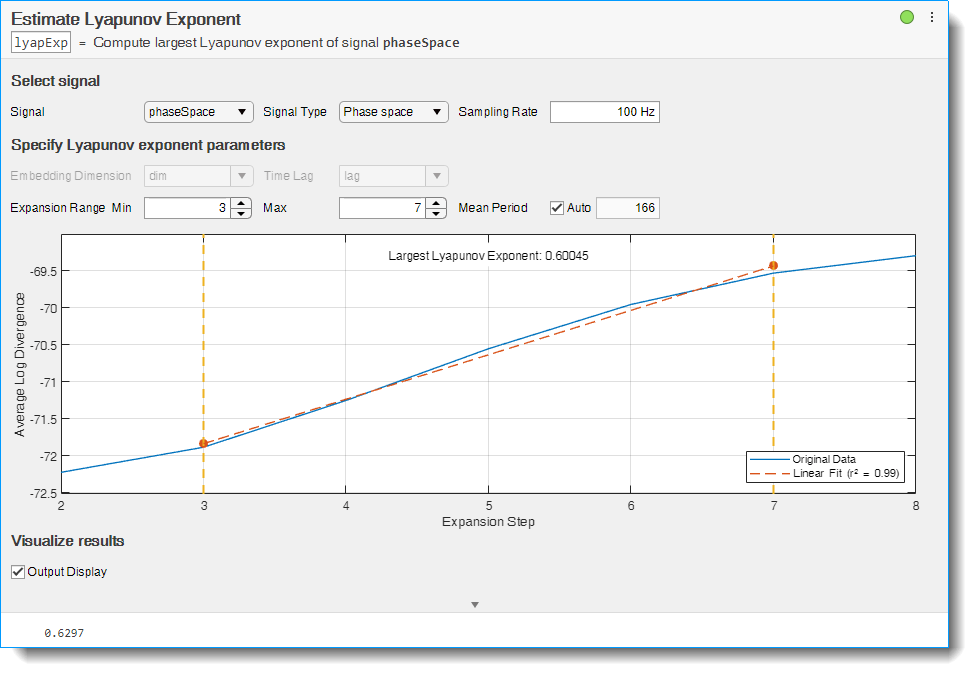랴푸노프 지수 추정
라이브 편집기에서 균일하게 샘플링된 신호의 랴푸노프 지수를 대화형 방식으로 추정
설명
랴푸노프 지수 추정 작업을 사용하면 균일하게 샘플링된 신호의 랴푸노프 지수를 대화형 방식으로 추정할 수 있습니다. 이 작업은 사용자가 작성한 라이브 스크립트를 자동으로 MATLAB® 코드로 생성합니다. 라이브 편집기 작업에 대한 자세한 내용은 라이브 스크립트에 대화형 방식 작업 추가하기 항목을 참조하십시오.
랴푸노프 지수를 사용해 위상 공간에서 무한히 가까운 궤적의 분리율을 특성화하여 서로 다른 끌개를 구분합니다. 랴푸노프 지수는 시스템의 무질서 수준을 수량화하는 데 유용하며, 결과적으로 잠재적인 결함을 검출하는 데 사용할 수 있습니다. 랴푸노프 지수가 음수이면 수렴을 나타내는 반면, 랴푸노프 지수가 양수이면 발산과 무질서를 나타냅니다.
작업 열기
MATLAB 편집기에서 라이브 스크립트에 랴푸노프 지수 추정 작업을 추가하려면 다음을 수행하십시오.
라이브 편집기 탭에서 작업 > 랴푸노프 지수 추정을 선택합니다.
스크립트의 코드 블록에
Lyapunov또는Lyapunov exponent와 같은 관련 키워드를 입력합니다. 제안된 명령 완성 항목 중에서랴푸노프 지수 추정을 선택합니다.
파라미터
버전 내역
R2019b에 개발됨







